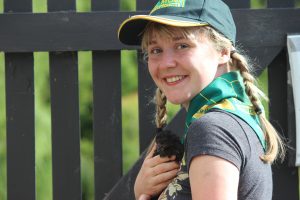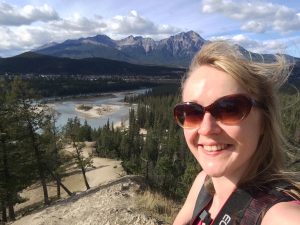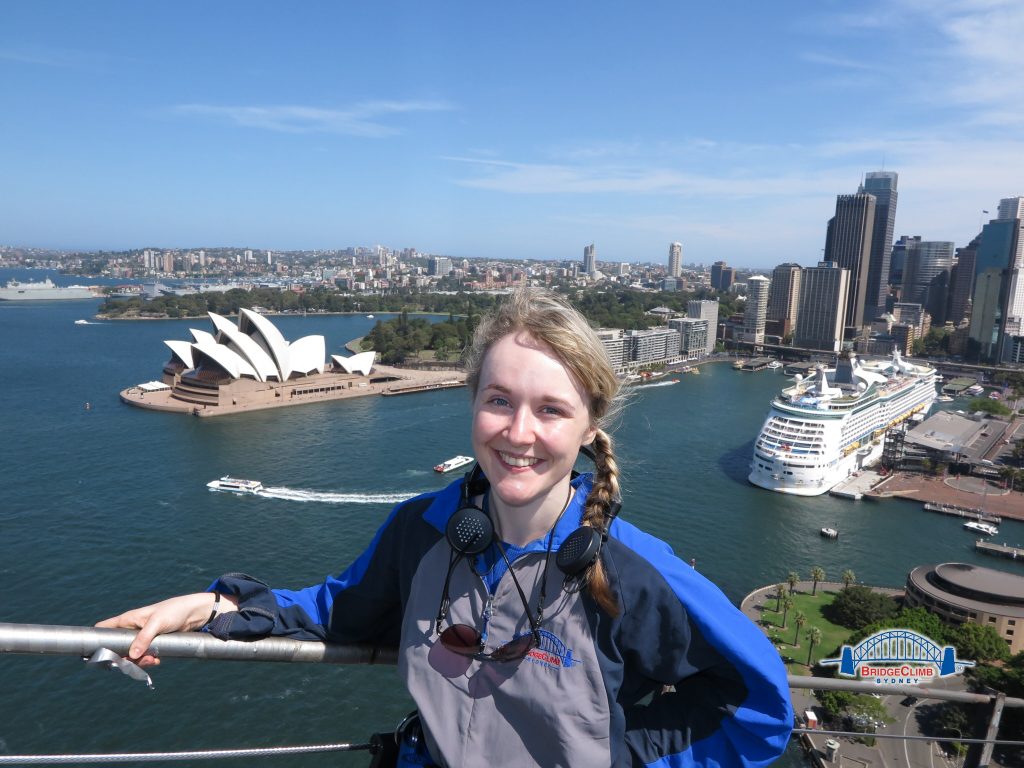Time to travel?
This Brain Tumour Awareness Month, Hayley has shared her story with us. Since her diagnosis aged 21, she’s been determined to not let her brain tumour stop her getting on some amazing adventures.

“I didn’t have headaches”
Hayley’s brain tumour diagnosis came as a total shock. At the age of just 21, she began vomiting up to sixty times a day, a situation that became pretty miserable pretty quickly. Although this was a clear sign that something wasn’t right with her health, Hayley didn’t imagine for one moment that this would eventually lead to the diagnosis of a brain tumour.
“I didn’t have headaches or seizures or any of the symptoms that you might expect” says Hayley, who was initially diagnosed with suspected Vomiting Epilepsy. When a scan revealed a grade one Ganglioglioma, Hayley was naturally shocked and terrified.
“You can’t just leave me!”
The recommended treatment plan was watch and wait, leaving Hayley with the knowledge that she was now living with a brain tumour, and offering her no relief at all from her symptoms. The continual vomiting had by now become completely debilitating, and she remembers saying to the neurosurgeon “But you can’t just leave me like this!”
It was at this stage that Hayley got in touch with brainstrust. We funded a second opinion for her with a neurosurgeon specialising in this area. This surgeon agreed to carry out elective surgery for Hayley, and the tumour was completely removed.
Hayley simply says: “I don’t know what would have happened to me without brainstrust.”
“I’m going to drive around the world”
Following her operation in September 2014, things were certainly not all plain sailing for Hayley, and it took over a year for her to reach a vague sense of a new normal. “I can remember medical staff saying to me prior to my operation “Oh, there’ll be a [post-operative] recovery period” in the sort of casual manner one might say “Oh, we’ll have a cup of tea in a moment”. I was under the impression that ‘recovery period’ was the term people used to get a couple of extra days off of work post-surgery. I couldn’t have been more wrong.” A self-confessed geek, Hayley was devastated to find that her ability to learn and remember new things had been significantly impaired since her surgery. Having been halfway through her university course at the time of her treatment, she had to come to terms with abandoning her degree when she found she could no longer take in the information during her lectures. On top of this, she would now be without a driving licence for sixteen months, making 2015 a particularly frustrating and challenging year for her.
The reinstatement of her driving licence in January 2016 seemed like an occasion worthy of celebration, and so Hayley decided to celebrate by driving around the world. As you do. September 2016 – January 2017 were spent driving across Canada, America, Hawaii and Australia, followed by a second trip around Ireland and Northern Ireland in May 2017. “I couldn’t comfortably walk far on these adventures because the surgery had left me very sensitive to walking on hard surfaces, but I could finally drive again.”

“If I’m going to potentially snuff it early, I might as well do it with a smile on my face!”
When Hayley returned from her driving adventures having been well and truly bitten by the travelling bug, she attended a talk on brain tumours. At this event, the speaker informed the audience that Hayley’s type of tumour often recurred, and that in this scenario the tumour might well act more aggressively. “Well”, declared Hayley on returning home from the event, “If I’m going to potentially snuff it early, I might as well do it with a smile on my face”. And so began Project British Isles.

Did you know that there are 250 British Isles? No, me neither. There are more than that if you count the ones that are less than 0.5 miles square, but Hayley isn’t counting those ones towards her total, unless there is something particularly interesting about them. She has decided to visit them all, and so spent a significant chunk of 2018 driving around the British Coastline, catching boats out to islands and sleeping in her Seat Ibiza. So far, she’s ticked off 81 islands, with a remaining 39 English, 118 Scottish and 12 Welsh isles to go. She’s had many adventures along the way, and planning is well underway for the upcoming 2019 trips.
Hayley has also recently completed the Gold Duke of Edinburgh’s Award and the Queen’s Scout Award. She loves animals, and has successfully re-introduced hedgehogs back into her village for the volunteering section of her awards.

Building a brain tumour community in Essex
When she’s not travelling around Britain sleeping in her car or creating hedgehog refuges, Hayley lives in Essex. Although still living with her own challenges as a direct result of her brain tumour and treatment, Hayley reaches out to try to support others in a similar situation.
Hayley is now working closely with brainstrust’s Support Specialist for London and the South East to build a community for patients and carers by helping to organise meetups and workshops in the area. She has also created a closed Facebook group for patients and carers in Essex to connect with one another for mutual support.
Please do get in touch with us if you’d like to attend a meetup in the Essex area as we’d love to hear from you.
Email: jane@brainstrust.org.uk
You can join the Essex Facebook group here, or just search ‘Mid-Essex Brain Tumour Support Group’.





